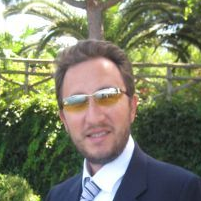Microwave Imaging and Its Application
A special issue of Electronics (ISSN 2079-9292). This special issue belongs to the section "Microwave and Wireless Communications".
Deadline for manuscript submissions: closed (30 September 2019) | Viewed by 39993
Special Issue Editor
Interests: microwave imaging and sensing; inverse scadering problems; radar imaging
Special Issues, Collections and Topics in MDPI journals
Special Issue Information
Dear Colleagues,
Microwave imaging refers to all the methods and techniques that exploit the scattering of electromagnetic waves to obtain information about a spatial region under investigation. The research in this field is rich and has progressed from detection and location to the more ambitious objective of reconstructing the scene in terms of the object shapes and material composition. The application contexts are countless, both for long- and short-range configurations, which range from classical radar imaging to subsurface prospecting, from through-the-wall imaging to medical diagnostics, to name just a few. In any case, to be successful, microwave imaging requires different ingredients, such as electromagnetic modeling, math and numerical math, signal processing, electronics, etc. The aim of this Special Issue is to collect contributions from scientists working in this field and in all the pertinent applicative contexts that provide recent advances in microwave imaging, including hardware design, image reconstruction methods, computational methods and experimental verification under realistic conditions.
Topics of interest for this Special Issue include, but are not limited to:
- Novel electromagnetic scattering models
- Linear and non-linear inversion methods and achievable performance
- Passive and/or non-cooperative source microwave imaging
- Information theoretic approaches for data selection and performance computation
- Numerically efficient inversion algorithms
- Hardware and antenna design
- Experimental in situ verification
- Antenna deconvolution and clutter rejection for near- and very near-zone configuration
- Phase only data microwave imaging
Prof. Raffaele Solimene
Guest Editor
Manuscript Submission Information
Manuscripts should be submitted online at www.mdpi.com by registering and logging in to this website. Once you are registered, click here to go to the submission form. Manuscripts can be submitted until the deadline. All submissions that pass pre-check are peer-reviewed. Accepted papers will be published continuously in the journal (as soon as accepted) and will be listed together on the special issue website. Research articles, review articles as well as short communications are invited. For planned papers, a title and short abstract (about 100 words) can be sent to the Editorial Office for announcement on this website.
Submitted manuscripts should not have been published previously, nor be under consideration for publication elsewhere (except conference proceedings papers). All manuscripts are thoroughly refereed through a single-blind peer-review process. A guide for authors and other relevant information for submission of manuscripts is available on the Instructions for Authors page. Electronics is an international peer-reviewed open access semimonthly journal published by MDPI.
Please visit the Instructions for Authors page before submitting a manuscript. The Article Processing Charge (APC) for publication in this open access journal is 2400 CHF (Swiss Francs). Submitted papers should be well formatted and use good English. Authors may use MDPI's English editing service prior to publication or during author revisions.
Keywords
- Electromagnetic Inverse Problems
- Microwave Imaging
- Experimental Investigations





